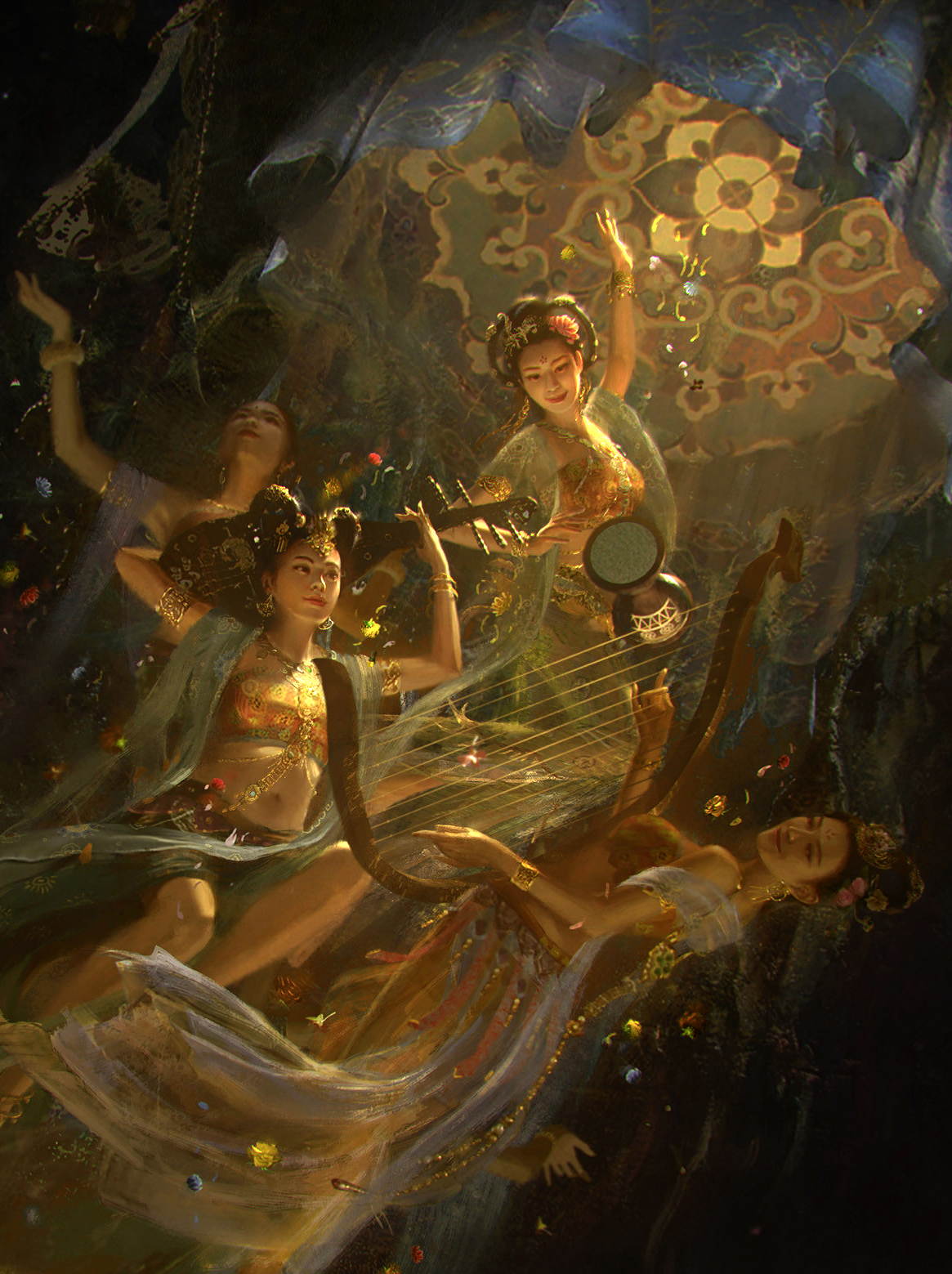Apsaras Orchestra by Rowena Wang: 敦煌 飞天壁画
Sumptuous rendering of floating apsaras (Buddhist celestial dancers) by Rowena Wang. According to Wang she took direct inspiration from murals of the ancient Mogao Grotto in Dunhuang. The fashion and hairstyles of the apsaras are based on Tang aesthetics and the bell tower's architecture based from Tang buildings depicted on the Mogao murals- especially the 飞天壁画 "Sky Soaring Apsaras Mural."
Apsara mural from Tang dynasty Grotto. Many of them combines strong Hindu and central Asian aesthetics along with local Han influences.
Apsaras depicted flying over the cityscape, they are marked by their long dancing ribbons/
Shazhou (Sha Prefecture,) or modern Dunhuang. It was an important convergence of all trade and pilgrimage traffic along the long neck of the Hexi Corridor. Because of strategic location Dunhuang was frequently intermittently used as a toll station, caravansary, pilgrimage center, and military garrison. The pagoda-like design of the Mogao Caves not only provided for an imposing facade for the grottoes but was also designed so as to survive the wind blast and earthquakes endemic to the region.












Comments